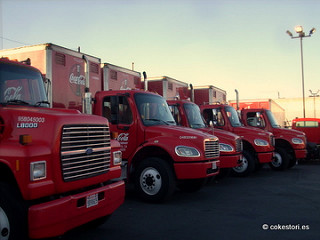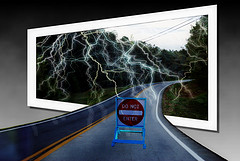Purdue University to Study Truck Platooning

Truck platooning happens when a fleet of trucks drives closely together with very little following distance between each vehicle. It is a way of maximizing the capacity of a road while also saving on fuel consumption. The University of Purdue aims to study truck platooning technologies to help industry partners with their research. Truck platooning could revolutionize the trucking industry as well as present a partial solution to driver shortages and hefty truck fuel costs.
Purdue University Receives a $5-Million Grant
The U.S. Department of Energy awarded a $5-million grant to Purdue University to study truck platooning. The study will examine the potential for fuel savings and vehicle-to-vehicle communication systems over a three-year timeframe. The project started in March 2017.
Several industry partners are joining the Purdue University team to study truck platooning, including Cummins, Peloton Technology, Peterbilt Motors Co., and ZF TMW. The University of Arizona will also work in collaboration with the National Renewable Energy Laboratory to contribute to the study.
The following are specific components that the partners will look at over the course of the truck platooning study:
- Pelton’s next-generation truck platooning technologies
- Cummins’ advanced powertrain concepts
- ZF TMW’s automated steering controls
- Peterbilt’s truck designs (579 model tractors)
A Closer Look at Current Truck Platooning Technologies
The goal of truck platooning is to add autonomous capability to trucks, save on fuel, and take up less space on the road. The Department of Energy wants to boost truck fuel economy by 20 percent through platooning. Peloton’s current platooning system has already shown a 7 percent increase in fuel economy with its Peterbilt 579 model tractors. Industry partners also want to add other technologies to the platooning system, such as vehicle-to-cloud connectivity and automated steering, to help boost fuel economy and autonomy. These new tractor trailers could hit the market by 2018.
Peloton’s Director of Research, Michael Palmer, said, “Our objective is to tap into fuel savings that can only be attained by managing the powertrain precisely for the road ahead, and for the specific configuration of the trucks … Cloud connectivity provides information about the road ahead, and the trucks exchange data about their estimated mass and powertrain capabilities. This helps us maintain smooth, efficient platooning through grades and rolling hills.”
Is Platooning the Future of Driverless Trucks?
The trucking industry has recently done extensive research on driverless trucks, but it will still be a long time before they are a reality on U.S. roads. However, platooning does put the industry one step closer to autonomous vehicles and trucks. Potentially, there could be one driver at the beginning of a truck platoon, and all other trucks in the fleet could communicate with the one driver about road conditions and speeds.
Truck platooning technology has important implications for supply chains. Companies could see goods moved to their final destinations more quickly. Pollution, road capacity, and noise could also see a reduction. Truck platooning is very promising to the entire transportation and logistics industry.






